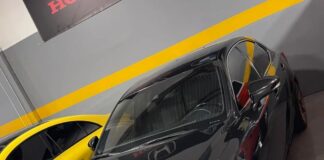Munich. The BMW Group now has a new light channel at
its disposal for testing the headlights and exterior lighting of new
models. The new Light Channel Next, constructed in a former parts
warehouse in Unterschleißheim near Munich, is one of the biggest and
most modern facilities of its kind in the world. It allows the
designers and developers to analyse and optimise all components of the
vehicle lights through precise simulation of different scenarios on
real models. As well as different kinds of substrates, the ambient
lighting conditions for any time of day and night can also be
realistically reproduced there.
In the new light channel, the developers mainly focus their
attention on the integration of highly adaptive headlights, which
guarantee safe illumination of the road and surroundings as well as
fatigue-free driving. As well as being an important factor in safety,
however, the vehicle lights are also a question of aesthetics for all
brands in the BMW Group. Daytime driving lights with a striking design
are as much a part of the light equipment on current models as the
illuminated BMW kidney “Iconic Glow”, the distinctive rear lights of
the MINI with their Union Jack design or the dynamic light carpet,
which adds a lighting effect to the vehicle’s entry area. Innovative
light designs and individual lighting effects give each model an
unmistakeable appearance.
“For the BMW Group, light is a topic that is constantly gaining
in importance. With the new Light Channel Next, we look
forward to a future of bringing innovative ideas to the vehicle and
the market which will make a lasting impression on customers and
enhance road safety”, says light expert Christian Jebas.
BMW Light Channel Next takes up where computers reach their limits.
When it comes to the development of new light systems,
computer-aided simulations provide a solid basis. Yet despite huge
advances in the field of virtual and mixed reality, a direct
evaluation of the light on the real vehicle remains indispensable for
the BMW Group engineers and designers. The new light channel offers
the perfect conditions for this.
Measuring 132 metres, the Light Channel Next is the longest
development tool in the BMW Group. The test surface is also around 22
metres wide. This means that the developers and designers have a total
area of almost 3,000 square metres at their disposal. The facility
also includes a workshop for preparing the prototypes for the light
tests. The new light channel’s entry into operation follows around
three years of construction. The location in Unterschleißheim is close
to the BMW Group’s Research and Innovation Centre (FIZ) to the north
of Munich.
Four ground surfaces for extensive light tests under all conditions.
One of the most important features of the new light channel is
its ground conditions. Four different surfaces are available for
analysing newly developed light technologies and light designs. The
central area has an asphalt surface, which has undergone a special
surface grinding process to artificially age it. Its reflection
characteristics correspond to those of a road, making it possible to
evaluate the colour and homogeneity of static or variable low-beam
headlight distributions.
In addition, a footpath or even a common underground car park
floor coating can be used for analysing the distinctive BMW light
carpets. The developers even have access to an oiled parquet floor of
the kind used for vehicle presentations at trade fairs.
BMW Light Channel Next simulates the lighting conditions at
all times of day.
In order to avoid unwanted reflections from the walls or
ceiling, the entire light channel is painted in a special
light-absorbing matt black colour. Light traps are also mounted in the
area of the walls so that the room with the exception of the floor
absorbs all light. Other surfaces are deliberately designed to provide
a clear visible reflection of incident light. The new light channel
thus has a test wall measuring 18 metres wide and three metres high
with a Lambertian radiation characteristic. This can be lowered if
necessary and is used for measuring the colour fringes at the
light/dark boundary of low-beam headlight distributions or for precise
adjustment of the headlight tilt. The light channel’s equipment also
includes a light sail measuring around 80 square metres for
determining any unwanted stray light.
For evaluating signal lamps which are also active during the
day, for example turn indicators or daytime driving lights, a daylight
wall measuring ten metres wide and five metres high provides a large,
light background. This can be varied not only in terms of luminosity,
but also colour temperature. In this way, the light conditions at
midday can be simulated just as well as those in the evening hours. In
order to ensure a reproducible positioning of the test vehicles, the
models are aligned fully automatically along the longitudinal axis by
means of a centring stand. This not only increases the precision, but
also saves valuable time that would otherwise be wasted on intricate manoeuvring.
As a key instrument in the development of new light concepts,
the Light Channel Next will begin operation with immediate effect. Its
numerous features and diverse application possibilities will help to
achieve the best possible quality for the customer and greatly
simplify the daily work of the engineers. The partial transformation
of an existing warehouse meant it was possible to cut the costs to a
minimum while maximizing the benefit for vehicle development.



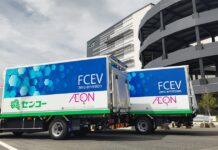
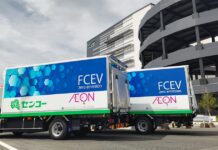
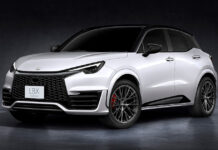
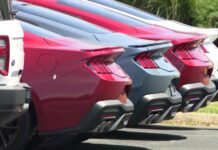
![[Presentation] Livestream of TMC’s Press Conference](https://www.miamicars.com/wp-content/uploads/2023/02/tmb_corporate-218x150.png)




